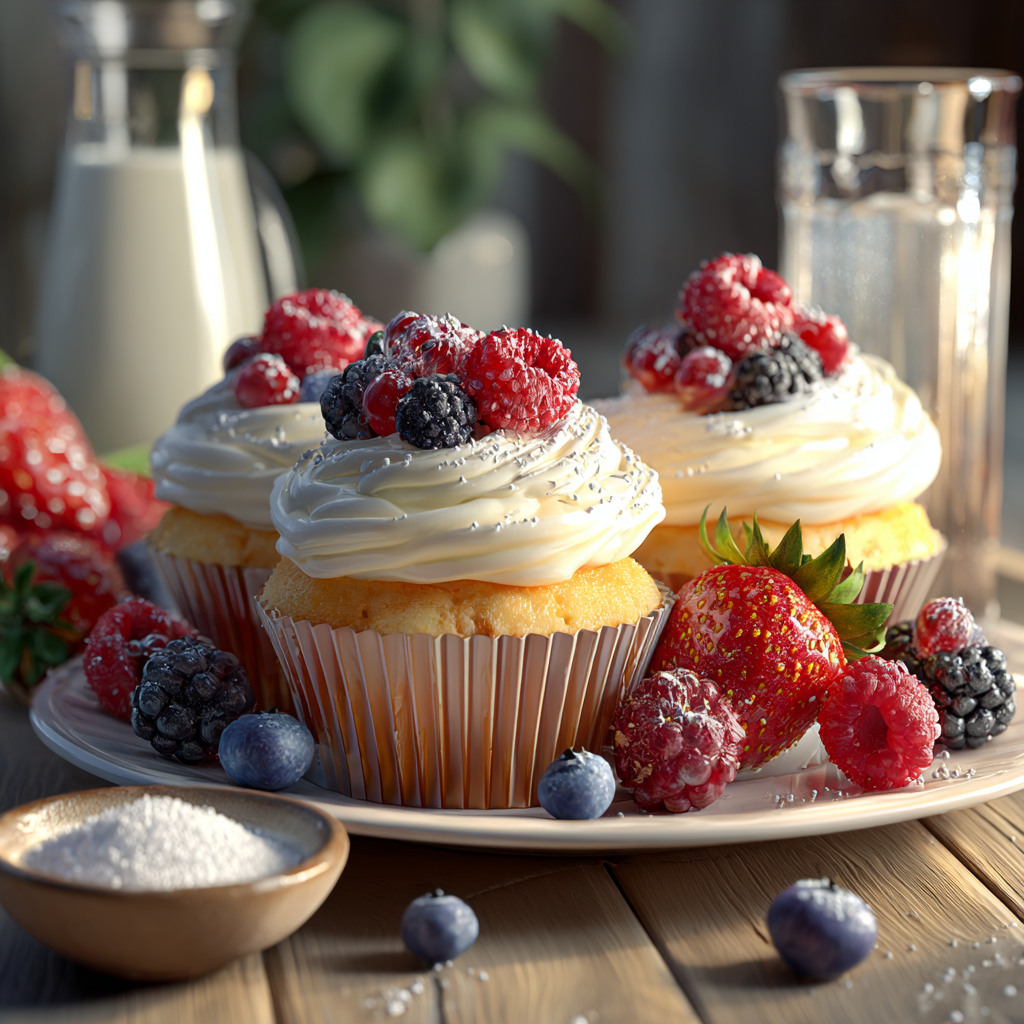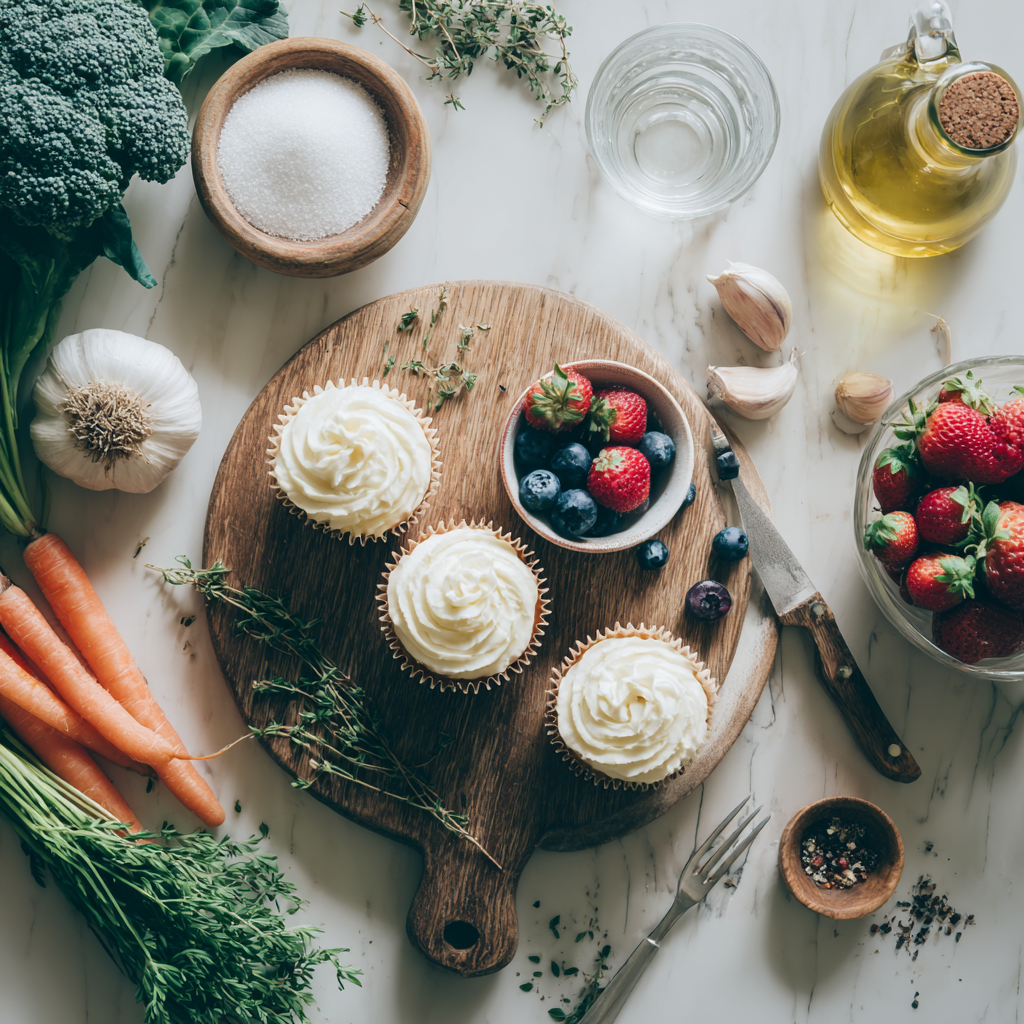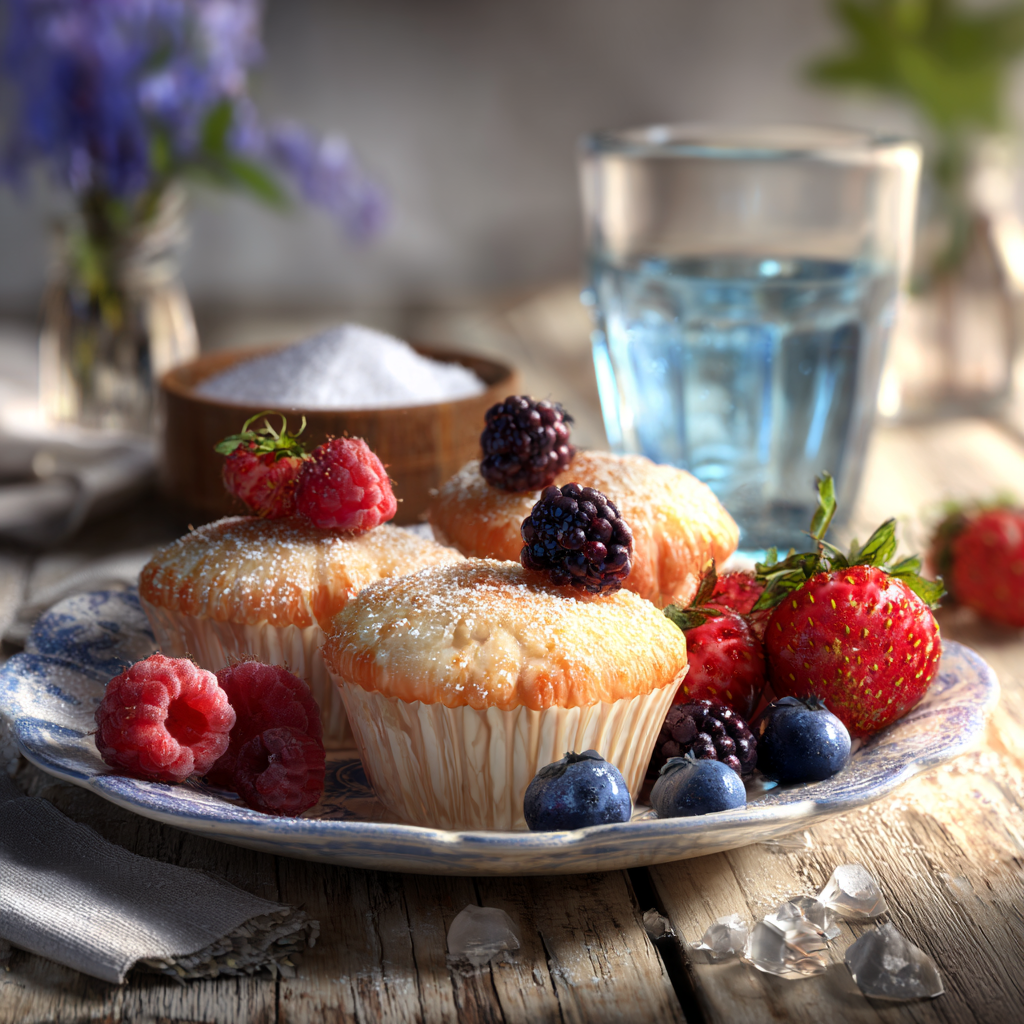
Why I Love Baking Milk Free Cupcake Recipes
Baking has always been my happy place. There’s something magical about mixing simple ingredients and pulling a batch of warm, fluffy cupcakes out of the oven. Over time, I discovered a new passion: creating milk free cupcake recipes. It started when a close friend mentioned she couldn’t eat dairy. I wanted her to enjoy the same treats as everyone else, so I began experimenting. That’s when I realized how easy—and delicious—it is to bake without milk.
More people are choosing dairy-free diets for health, ethical, or personal reasons. Whether they’re vegan, lactose intolerant, or just cutting back on dairy, they shouldn’t miss out on cupcakes. That’s why I’m excited to share my tips and tricks for making amazing milk free cupcake recipes. These treats are not only inclusive but often tastier than traditional ones.
Why Choose a Milk Free Cupcake Recipe?
You might be wondering, Is milk necessary for cupcakes? The short answer is no. While milk adds moisture and richness, there are plenty of substitutes that work just as well—or even better. I remember the first time I swapped milk for almond milk in a recipe. I was nervous, but the cupcakes turned out light, moist, and full of flavor. It opened my eyes to the possibilities of dairy-free baking.
Milk free cupcake recipes cater to many dietary needs:
- Vegans who avoid all animal products
- Lactose-intolerant individuals who can’t digest dairy
- People with allergies or sensitivities to milk
- Those who choose plant-based diets for health or ethical reasons
The best part? You don’t have to compromise on taste or texture. With the right substitutes, your cupcakes will still be soft, sweet, and satisfying.
Benefits of Dairy-Free Baking
Dairy-free baking isn’t just about meeting dietary restrictions. It’s also versatile and fun. One of my favorite things about milk free cupcake recipes is how creative you can get with flavors. For example, coconut milk adds a subtle tropical twist, while oat milk brings a creamy, nutty undertone. Each substitute brings something unique to the table.
Here’s what makes dairy-free baking so appealing:
- Versatility: You can use a wide range of plant-based milks, like almond, soy, or cashew.
- Flavor enhancement: Some alternatives, like coconut or hazelnut milk, add depth to your cupcakes.
- Texture improvement: Many substitutes keep cupcakes moist and tender.
I’ve learned that baking without milk doesn’t mean sacrificing quality. In fact, it often leads to unexpected discoveries. One day, I ran out of almond milk and used canned coconut milk instead. The result? A rich, velvety cupcake that became an instant favorite.
If you’re new to milk free cupcake recipes, don’t worry. It’s easier than you think. Water works in a pinch, though plant-based milks give better results. Even boxed mixes can be made dairy-free by swapping out the milk. Trust me, once you try it, you’ll wonder why you didn’t start sooner.
As more people embrace dairy-free living, the demand for inclusive recipes continues to grow. From birthday parties to bake sales, milk free cupcake recipes ensure no one feels left out. Plus, they prove that delicious desserts don’t need dairy to shine.

How to Make Cupcakes Without Milk
You know, one of the most common questions I get is this: Can you make cupcakes without milk? The answer is a resounding yes. Not only is it possible, but it’s also surprisingly easy once you know what to do. When I first started experimenting with dairy-free baking, I was skeptical too. But after countless batches of cupcakes, I can confidently say that skipping the milk doesn’t mean sacrificing flavor or texture. Let me walk you through how to nail this process.
The secret to making cupcakes without milk lies in choosing the right liquid substitutes. There are tons of options out there, and each one brings its own flair to your recipe. For instance, unsweetened almond milk is my go-to when I want something neutral that won’t overpower the other flavors. If you’re aiming for richness, coconut milk is an absolute game-changer—it gives the cupcakes a velvety texture that’s hard to beat. Have you ever tried oat milk? It’s creamy and slightly sweet, which works wonders in recipes like my dairy free cupcake recipe.
Funny enough, I once made a batch using soy milk because it was all I had on hand, and they turned out so tender that no one even noticed they were dairy-free. Soy milk is a great option if you’re looking for something with a bit more protein. By the way, if you’re feeling adventurous, you could even try cashew milk or rice milk. Each substitute has its own personality, so don’t be afraid to mix things up!
Here’s the thing—some people wonder, What to use instead of milk when making cupcakes? Well, it depends on the vibe you’re going for. If you’re baking for a crowd and need a safe bet, almond milk or soy milk will never steer you wrong. But let’s say you’re whipping up something special, like a tropical-themed dessert. In that case, coconut milk adds a subtle hint of paradise that pairs beautifully with flavors like pineapple or mango. Or take inspiration from my coquito cupcake recipe, where coconut milk plays a starring role.
Now, here’s a tip I’ve picked up along the way: Can I use water instead of milk in a cupcake recipe? Technically, yes, you can. Water will hydrate the batter and allow the cupcakes to bake properly. However, I’ll be honest—it’s not ideal. Water lacks the fat content and creaminess that milk alternatives provide, which can leave your cupcakes tasting a bit flat. Plus, they might end up drier than you’d like. So while water works in a pinch, I always recommend grabbing a plant-based milk if you can. Your taste buds will thank you.
Oh, and here’s a little side note: Don’t forget to check the labels if you’re buying pre-made plant-based milks. Some brands add extra sugars or thickeners that could alter the final result. Stick to unsweetened varieties unless the recipe specifically calls for something sweeter. Trust me, I learned this the hard way when I accidentally used sweetened vanilla almond milk in a savory cupcake experiment. Lesson learned!
Step-by-Step Guide to My Favorite Milk Free Cupcake Recipe
Alright, let’s dive into the nitty-gritty. Making milk-free cupcakes is easier than you might think, especially if you follow a straightforward approach. First off, gather your ingredients. You’ll need flour, sugar, eggs (or a vegan alternative), oil or butter, baking powder, vanilla extract, and of course, your chosen plant-based milk. For this particular recipe, I lean toward oat milk because it adds just enough creaminess without stealing the spotlight from the other flavors.
To start, whisk together your dry ingredients in one bowl and your wet ingredients in another. This method ensures everything mixes evenly and prevents lumps. Once both mixtures are ready, gently fold them together until you have a smooth batter. Be careful not to overmix—nobody likes dense cupcakes! At this point, you can stir in any mix-ins you fancy, like chocolate chips or sprinkles. I love adding a handful of shredded coconut for a fun twist, inspired by my charlotte russe cupcake recipe.
Next, spoon the batter into lined cupcake tins, filling each about two-thirds full. Pop them into a preheated oven and let the magic happen. While they bake, you can whip up a simple frosting using dairy-free butter or cream cheese. Funny story—I once forgot to set out my frosting ingredients ahead of time, so I improvised with a drizzle of melted dark chocolate instead. Sometimes happy accidents lead to the best results!
After about 18–20 minutes, your cupcakes should be golden brown and springy to the touch. Let them cool completely before frosting, otherwise, you’ll end up with a melty mess. Pro tip: If you’re short on time, these cupcakes taste amazing plain too. I often sneak one straight from the tray before they’re frosted, and it’s pure bliss.
By the way, if you’re craving something a bit fancier, consider trying my Boston cream pie cupcakes recipe with cake mix. It’s a showstopper that proves dairy-free desserts can hold their own at any gathering. Just swap out the traditional milk for your preferred alternative, and you’re good to go.
For beginners, this process is as simple as it gets. No fancy equipment required—just a couple of bowls, a whisk, and an oven. The beauty of milk-free baking is that it’s forgiving and flexible. Whether you’re catering to dietary restrictions or simply exploring new flavors, these cupcakes are sure to impress. And hey, if you mess up, remember that practice makes perfect. Even the pros have their off days!
One last thing—I highly recommend jotting down notes as you experiment with different milks. Maybe oat milk works better for chocolate cupcakes, while coconut milk shines in fruity ones. Keeping track of what works helps refine your skills and builds confidence in the kitchen. Who knows? You might stumble upon your signature creation along the way.

Tips for Perfecting Your Milk-Free Cupcakes
Alright, let’s get down to the nitty-gritty of making milk-free cupcakes that are moist, fluffy, and downright irresistible. You’ve probably heard me mention how versatile plant-based milks can be, but there’s more to it than just swapping one liquid for another. Here’s the thing: baking is like a science experiment in your kitchen, and even small tweaks can make a big difference. Trust me, I’ve had my fair share of dry cupcakes before figuring out these tricks.
One game-changing tip? Add a splash of acidity to your batter. Funny enough, this idea came to me while trying to recreate my grandma’s famous buttermilk cupcakes—except, you know, without the milk. A teaspoon of vinegar or lemon juice mixed into your plant-based milk mimics the tangy richness of buttermilk. It reacts with the baking powder or baking soda, giving your cupcakes that light, airy texture we all crave. Seriously, it’s like magic in a mixing bowl.
Here’s another pro tip: don’t skimp on ingredient quality. I once used a generic store-brand cocoa powder for chocolate cupcakes, and they turned out… fine. But when I splurged on high-quality cocoa, wow—the flavor was next-level. The same goes for your plant-based milks. Opt for unsweetened, organic options whenever possible. Sure, it might cost a bit more, but your taste buds will thank you. Plus, better ingredients mean fewer weird additives that could mess with your recipe.
By the way, have you ever thought about fat content? Some plant-based milks, like full-fat coconut milk, bring extra richness to the table. If you’re aiming for decadence, go for something with higher fat. On the flip side, lighter options like almond or oat milk work great for delicate flavors. Mixing and matching based on what you’re baking is half the fun!
Oh, and here’s something I learned the hard way: don’t overbake your cupcakes. Dairy-free batters can sometimes dry out faster than traditional ones, so keep an eye on them as they bake. I always set my timer for the minimum time listed in the recipe and check frequently after that. Insert a toothpick—if it comes out clean (or with just a few crumbs), you’re golden.
Frosting Without Compromise
Let’s talk frosting because, honestly, what’s a cupcake without it? When going dairy-free, you’ve got plenty of options that taste just as good—or even better—than buttercream made with real butter. My personal favorite is vegan cream cheese frosting. It’s tangy, creamy, and pairs beautifully with almost any flavor. Just blend dairy-free cream cheese, powdered sugar, and a splash of vanilla extract until smooth. Easy peasy.
If cream cheese isn’t your jam, try a simple ganache made with dark chocolate and coconut milk. Heat the coconut milk until it’s warm (but not boiling), pour it over chopped chocolate, and let it sit for a minute before stirring. Voilà—a glossy, luxurious topping that looks super fancy but takes zero effort. Pro tip: chill the cupcakes before adding ganache if you want it to set nicely.
And hey, don’t forget about fruit-based frostings! Once, I made a batch of strawberry cupcakes topped with a whipped coconut cream frosting. To make it, I chilled a can of full-fat coconut milk overnight, scooped out the solid part, and beat it with powdered sugar and vanilla. It was such a hit that I now keep cans of coconut milk stocked just for emergencies.
Experimentation is Key
Speaking of experimentation, don’t be afraid to play around with flavors and textures. One of my happiest accidents happened when I accidentally added a pinch of cardamom to a vanilla cupcake batter. It gave the cupcakes this warm, spicy undertone that everyone raved about. Moral of the story? Sometimes mistakes lead to brilliance.
You know, I also love incorporating unexpected mix-ins. Shredded coconut, crushed cookies, or even a dollop of jam swirled into the batter can elevate your cupcakes from “meh” to “wow.” And if you’re feeling adventurous, why not try infusing your plant-based milk? Steeping tea bags or spices in warm milk adds a subtle complexity that’ll impress anyone who takes a bite.
Funny story—I once tried making lavender-infused oat milk for a floral cupcake recipe. Let’s just say it didn’t turn out quite right (too much lavender = soap vibes). But hey, at least I learned something new. The point is, don’t be afraid to fail. Baking is supposed to be fun, and every misstep teaches you something valuable.
By the way, if you’re looking for more inspiration, check out our collection of cake and cupcake recipes. There’s a whole world of possibilities waiting for you, whether you’re team chocolate, vanilla, or somewhere in between.
Final Thoughts
At the end of the day, baking milk-free cupcakes is about creativity, inclusivity, and having fun in the kitchen. Whether you’re catering to dietary restrictions or simply exploring new flavors, these treats prove that delicious desserts don’t need dairy to shine. So grab your favorite plant-based milk, roll up your sleeves, and start experimenting. Who knows—you might just discover your new signature recipe!
FAQs About Milk Free Cupcake Recipes
- Can you make cupcakes without milk?
Absolutely! Plant-based milks like almond, soy, or coconut milk work beautifully as substitutes. They provide moisture and flavor without compromising texture. - What to use instead of milk when making cupcakes?
Try almond milk, oat milk, or coconut milk for a creamy base. For richer results, opt for full-fat canned coconut milk. Each option brings its own unique twist to the recipe. - Can I use water instead of milk in a cupcake recipe?
Yes, but it’s not ideal. Water hydrates the batter but lacks the fat and creaminess of milk alternatives, which can result in drier cupcakes. - Is milk necessary for cupcakes?
Nope! While milk adds richness, many non-dairy substitutes perform just as well—or better. Plus, they open up opportunities for creative flavor combinations. - How do I make my cupcakes moist without milk?
Use high-quality plant-based milks, add a touch of acidity (like vinegar), and avoid overbaking. Ingredients like applesauce or mashed banana can also boost moisture levels. - What’s the best frosting for milk-free cupcakes?
Vegan cream cheese frosting, coconut whipped cream, or dark chocolate ganache are all fantastic choices. They’re rich, flavorful, and completely dairy-free. - Can I freeze milk-free cupcakes?
Definitely! Store them in an airtight container to prevent freezer burn. Thaw at room temperature before serving, and enjoy fresh-tasting treats anytime. - Do I need special tools for dairy-free baking?
Not at all. Standard baking equipment works perfectly fine. Just ensure your ingredients are fresh and properly measured for best results. - Are milk-free cupcakes healthier?
It depends on the ingredients. Using wholesome plant-based milks and natural sweeteners can make them a tad healthier, but portion control still matters! - Why did my cupcakes turn out dense?
Overmixing the batter or using expired leavening agents could be the culprit. Be gentle when folding ingredients together, and always check expiration dates.

Equipment
- Mixing bowls
- Whisk
- Cupcake tins
- Cupcake liners
- Oven
Ingredients
- 2 cups all-purpose flour
- 1 cup granulated sugar
- 3 large eggs or a vegan alternative
- 1/2 cup vegetable oil or dairy-free butter
- 2 teaspoons baking powder
- 2 teaspoons vanilla extract
- 1 cup plant-based milk (e.g., oat milk, almond milk, or coconut milk)
Instructions
- Preheat the oven to 350°F (175°C).
- In one bowl, whisk together the dry ingredients: flour, sugar, and baking powder.
- In another bowl, combine the wet ingredients: eggs, oil or butter, vanilla extract, and plant-based milk.
- Gently fold the dry ingredients into the wet ingredients until smooth, being careful not to overmix.
- If desired, stir in mix-ins like chocolate chips or shredded coconut.
- Spoon the batter into lined cupcake tins, filling them about two-thirds full.
- Bake in the preheated oven for 18-20 minutes or until the cupcakes are golden and springy to the touch.
- Allow the cupcakes to cool completely before frosting.
Notes
Consider adding a splash of vinegar or lemon juice to your plant-based milk for a buttermilk substitute effect; it helps achieve a light texture. These cupcakes can be easily adapted by stirring in mix-ins like nuts, dried fruits, or even a dollop of jam for extra flavor.
Store any leftovers in an airtight container at room temperature or freeze them for later. Just thaw at room temperature before enjoying!
For a simple frosting, try using vegan cream cheese or make a dark chocolate ganache for a rich topping.
